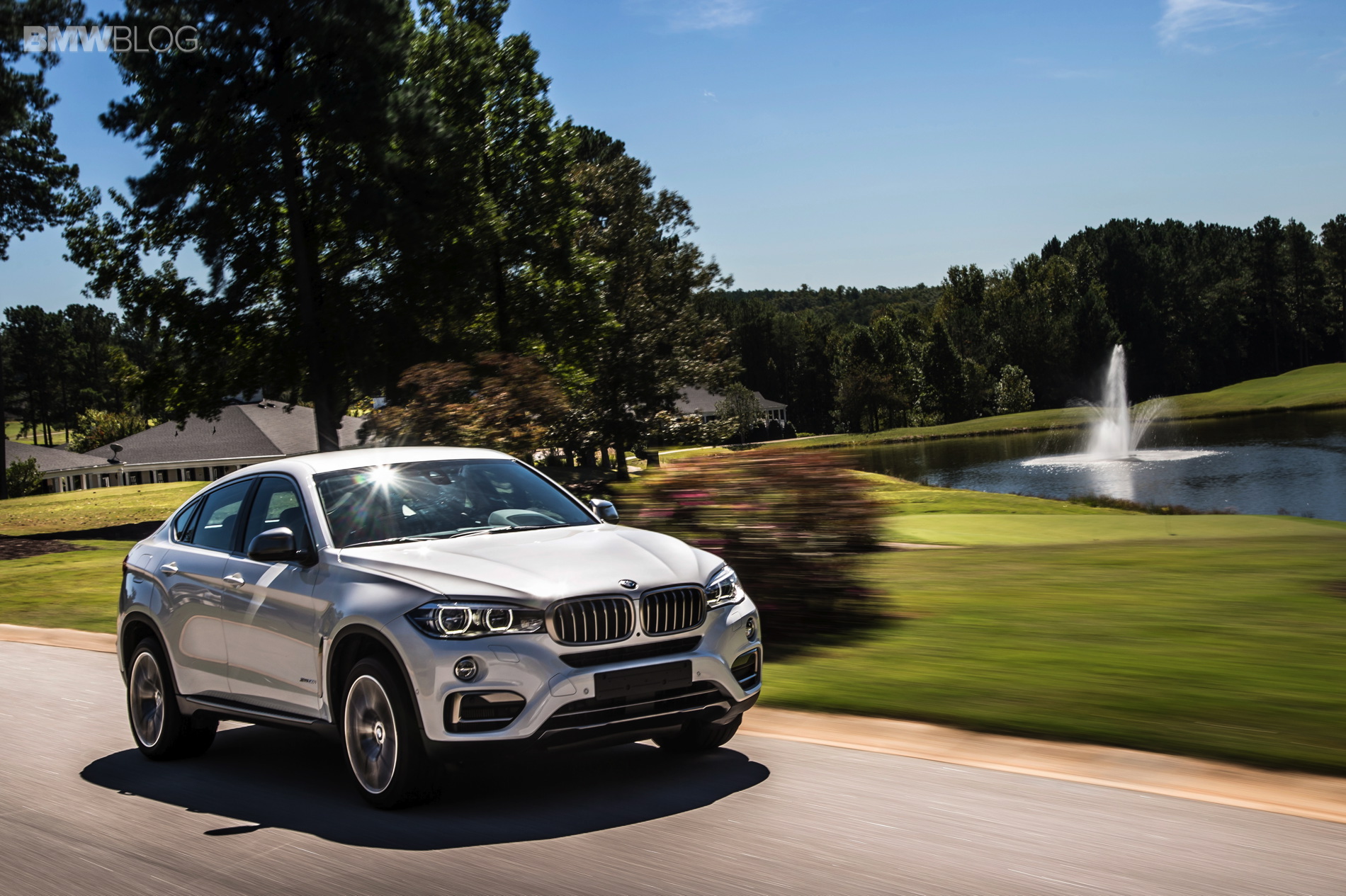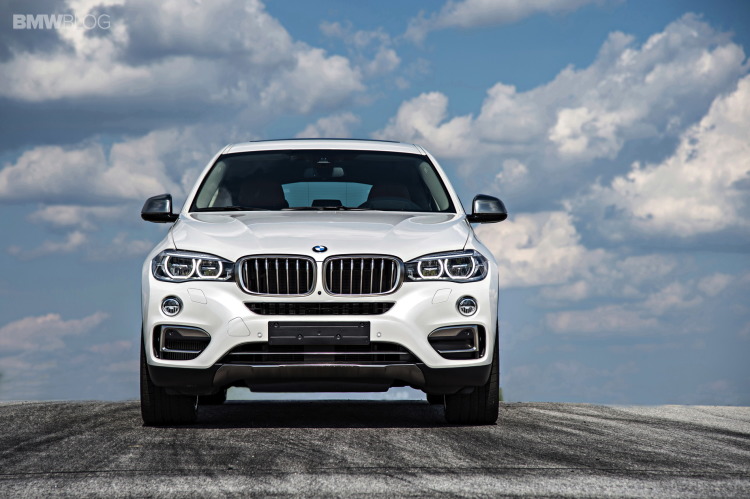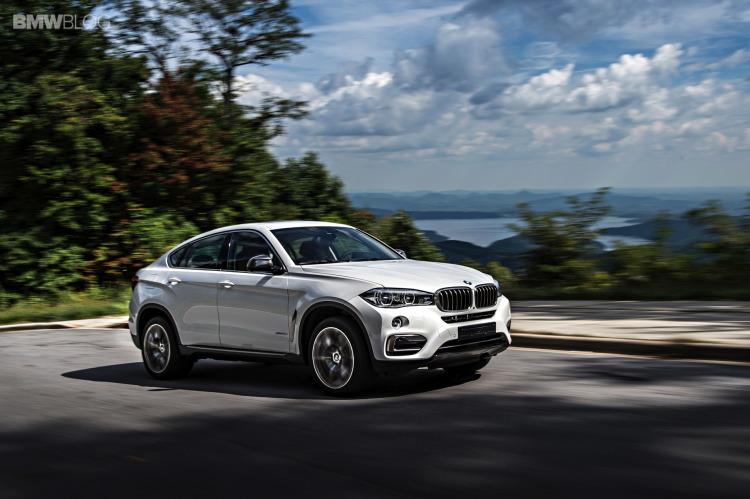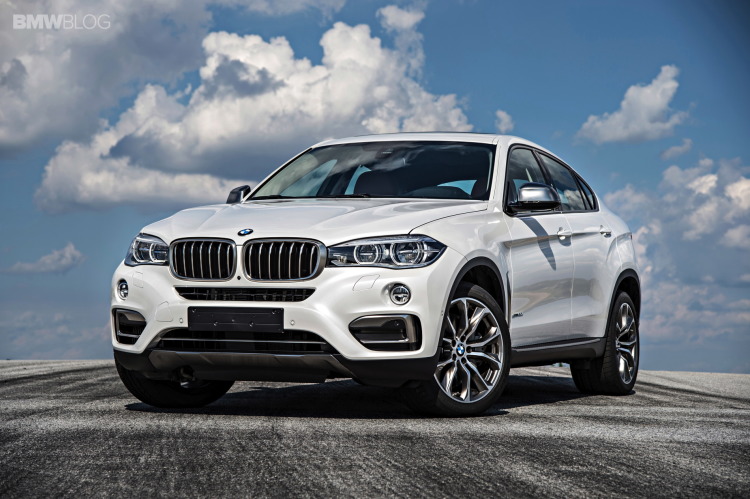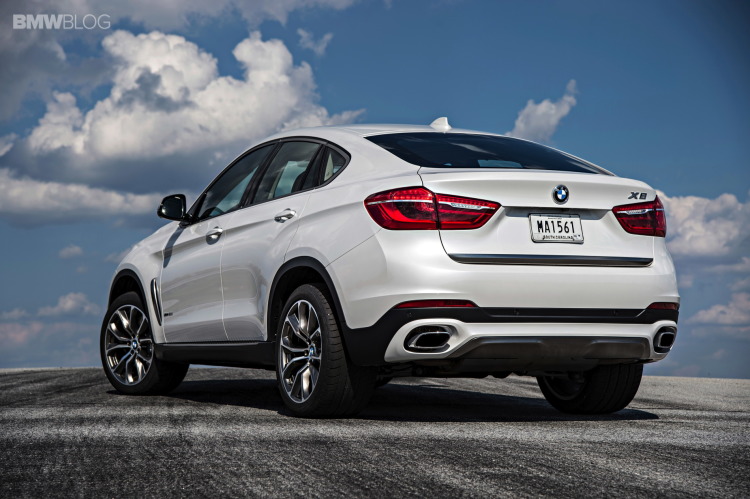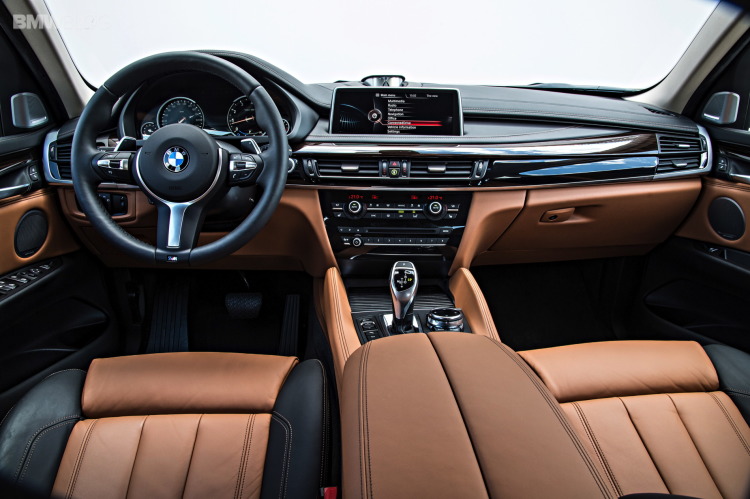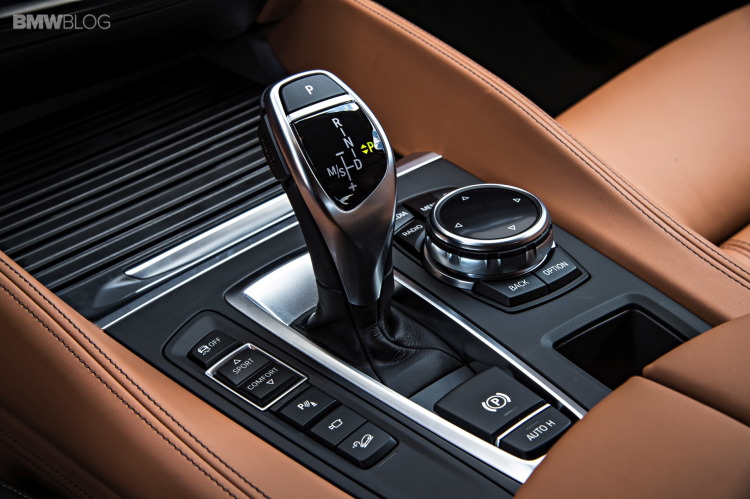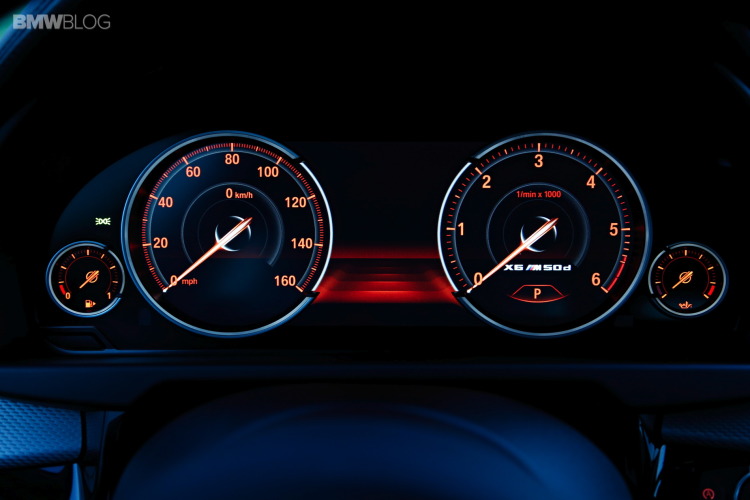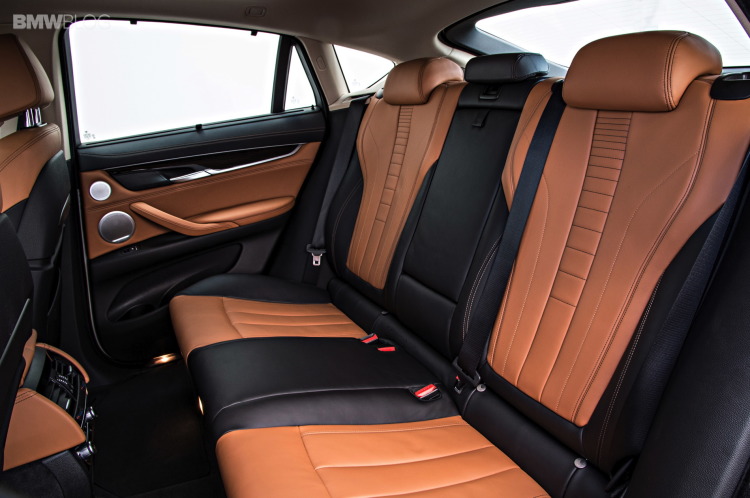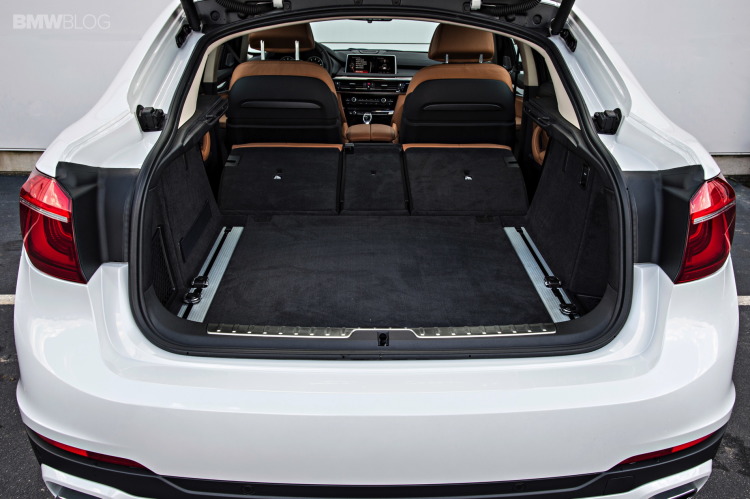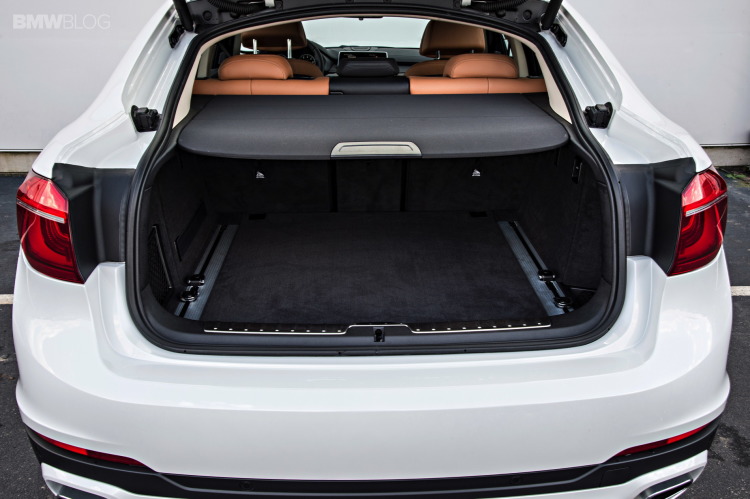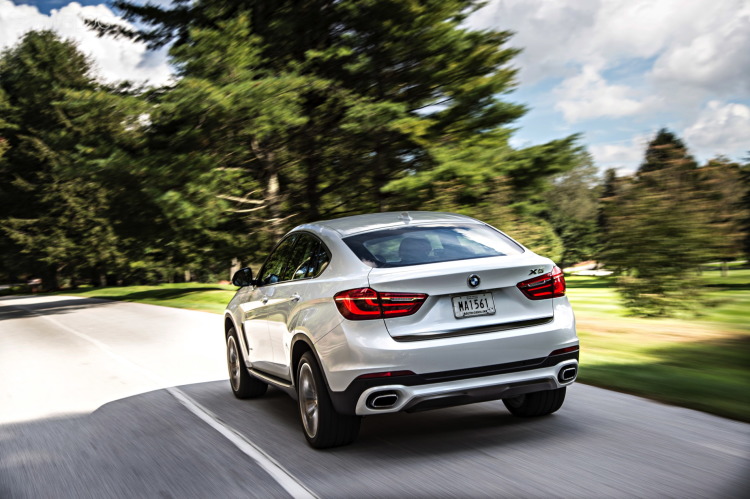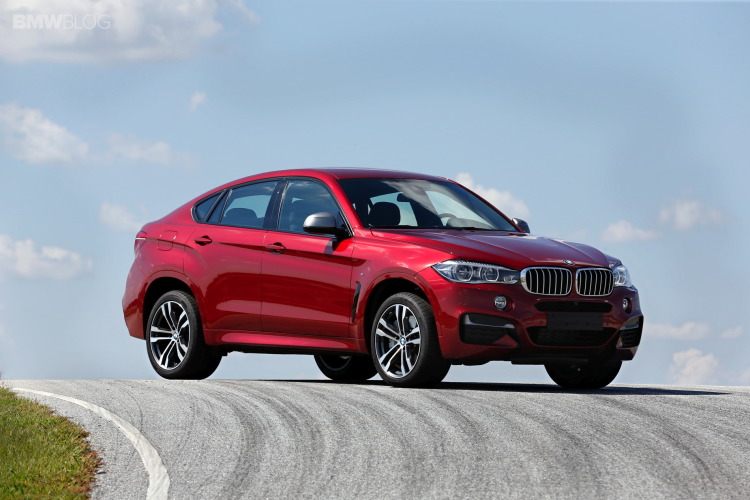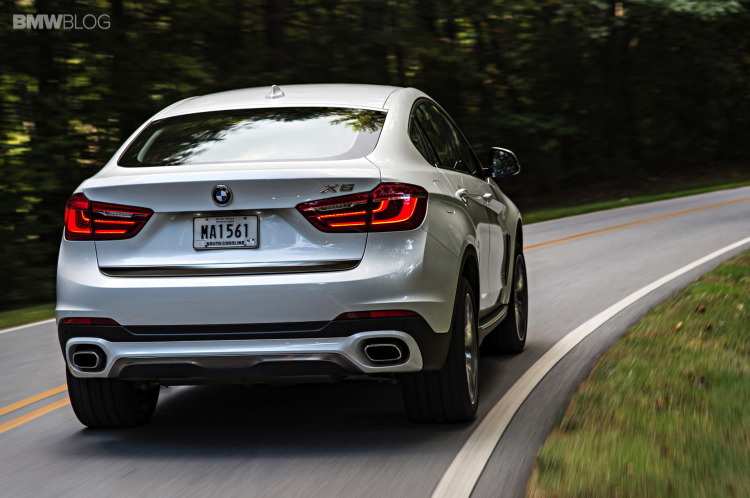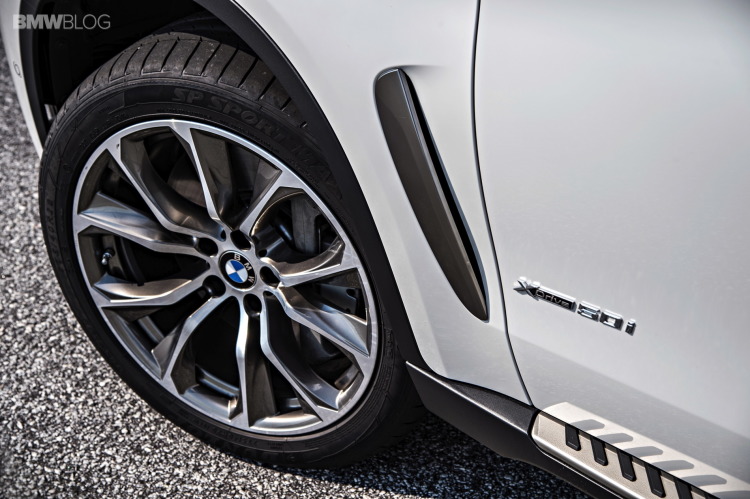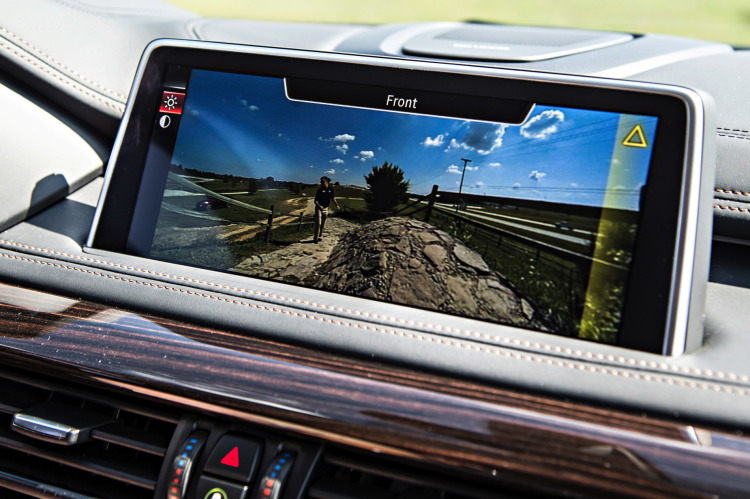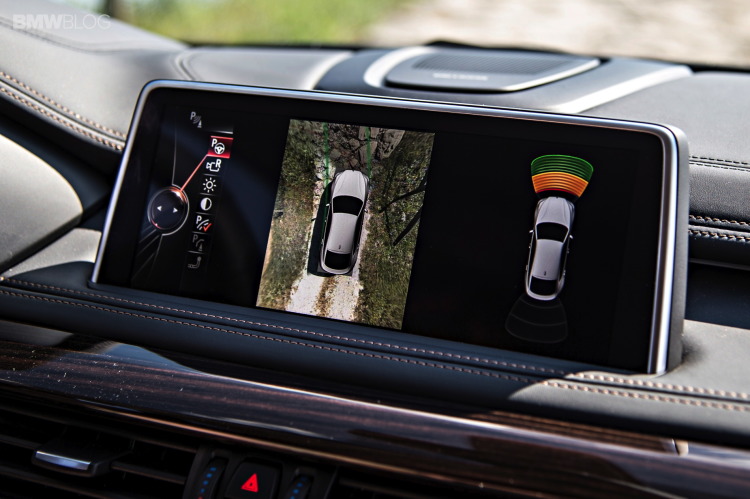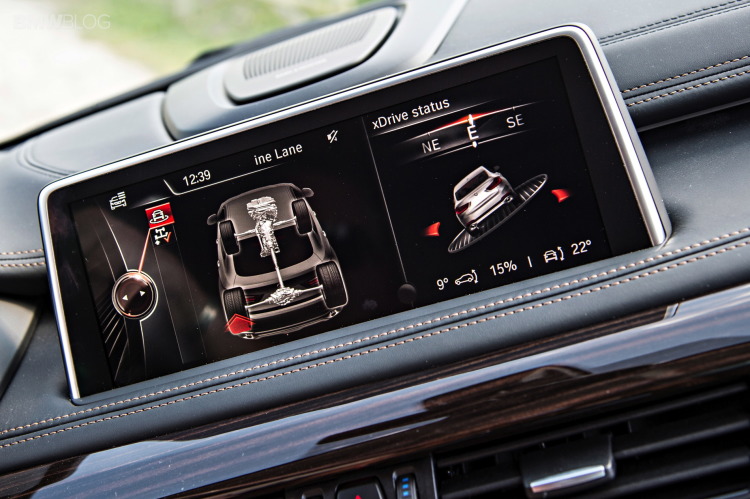15 years ago, the BMW X5 made its debut as the world’s first Sports Activity Vehicle, attracting both praises and concerns from the BMW community. The introduction of the BMW X5 in 1999 laid the foundation stone for other X models to create new segments or to fill premium niches. In 2008, BMW introduced the world’s first Sports Activity Coupe, the BMW X6, which seven year later has been deemed successful for the brand with close to 250,000 units sold worldwide, an impressive figure for a somewhat niche model.
Now, BMW aims to build upon that success and deliver an even more compelling product.
Considered more of an evolution over its predecessor, the second-generation BMW X6 will soon face tougher competition in the segment with the Mercedes-Benz ML and a Porsche model based on the Cayenne.
EXTERIOR APPEAL
It is indisputable that the F16 BMW X6 is an evolution of the E71 X6, with a design that doesn’t deviate from the proven formula. The new X6 is more masculine than ever, wider, slightly larger and meaner than ever. The front-end simply dominates the road and if you add the M Sport Package to the deal, you can see what’s in store, and more, for the upcoming BMW X6 M.
The dimensions of the first and second generation SACs can hardly be distinguished: three more centimeters in length, 2.5 centimeters more in width and 3mm more height.
Some of the specific changes are the the bigger X-shape of the nose with the larger headlights and 3D-sculpted kidney grille, horizontal inlets in the air intakes, air breathers and air curtains. The latter are aerodynamic features that help with the air flow and resistance – instead of building up and creating more drag upon the wheels, the air is routed behind the wheels, where it’s channeled through those side vents. In the back, the designers updates the rear-end with a lower and more dynamic-looking lid. The taillights are wrapping around the car and are sleeker and longer. Thanks to all these aero changes, the coefficient drag dropped from 0.34 to 0.32 Cd.
The most significant changes come from the side where the new BMW X6 stands out with its sharp creases and character lines along the flanks.
BMW says that while visually and essentially technically the new X6 is a larger car, the weight has dropped – 2,145 kg vs 2,100 kg – aided by the more extensive use of lightweight, high-strength steel, an aluminum hood and plastic fenders.
INTERIOR & CABIN TECH
While the exterior design changes are welcome and exciting at the same time, we believe the real story is inside the new X6 where now the term premium cabin can be attributed to the car without reluctance.
The cabin is significantly more luxurious than its predecessor, with premium materials and design lines that differentiate the X6 not only from the previous model, but also from the new F15 X5. Ulrich Strohle, the X6 interior designer, says the design philosophy continues with the layer approach with open stitching giving the car an equal elegant and sporty look aimed at a more spirited driver compared to the traditional SUV chauffeur.
On top of the dash reigns the free-standing 10.2-inch LCD display, a staple now in the interior design of any new BMW. The high-res screen displays all the connected features in the car and outside, and display them through the intuitive iDrive interface. The information can be controlled and manipulated via the iDrive Touch knob, which takes both rotary inputs as well as gestures.
The previous X6 originally came to market as a four-seater, a “feature” that many customers have complained about. It has later added the option of a fifth seat and a bench, a feature that now carries over to the new X6 – a four-place seating is optional. Space in the front and rear has also been increased, with more than decent legroom and headroom, even for someone measuring 6″2 (188 cm). Sure, the non-reclinable rear seats might offer less for your head than the X5 or Porsche Cayenne, but that’s the comprise of having a beautiful sloping roofline.
The trunk offers 580 liters of cargo space with more available when the rear seats – split 40/20/40 – fold flat.
Is it all high-standards inside the car? Certainly not. In order to keep the car at a decent price point, some plastic buttons were imported from the 1 and 3 Series. Even with those little quirks of ours, the cabin of the new X6 is exponentially better than the first generation.
Connectivity, safety and comfort features are all packed inside the car. The new digital gauges will change dramatically depending upon the driving mode you’ve selected. Clearly, the Sport mode made us the happiest with its red display and full tachometer.
For the more aggressive drivers and for those taking the car to the track or offroad – yes, there are some customers that will – BMW included padded knee bracing along the center console.
HOW DOES IT DRIVE
We had the choice to test the global BMW X6 xDrie50i model or the M Performance Automobiles M50d which, unfortunately, is not available in the US. We’ve opted for the high-end 4.4 liter V8 TwinTurbo as our hauler to the BMW Performance Center, a 150 miles route through the South and North Carolina backroads that offer some great twisties and corners. Unfortunately, the day we were scheduled for the drive proved to be one of the rainiest of the year in South Carolina, with heavy rain throughout the entire day. In a way, we were hoping for some dry pavement to throw the X6 xDrive50i into the corners, but at the same time, we felt lucky to have weather conditions that allow us to test the safety of the car and the xDrive system on slippery, dangerous roads. At some fairly fast speeds.
The X6 xDrive50i’s V8 engine has been reworked to produce 45 more horsepower and 30 lb.-ft. more torque – 445 hp and 480 lb-ft of torque – enabling it to sprint from zero to 100 km/h (62 mph) in 4.8 seconds, an improvement of 0.5 seconds over the previous generation. Quite fast for a car of that size. It comes with only one transmission — the ZF eight-speed automatic — that includes a launch control function.
The chassis of the X6 is tuned for understeer but the adaptive suspension delivers a ride comparable to a rear-wheel drive sedan. The X6 demonstrates stable cornering at speed, smooth throttle and excellent brake performance. While improved over other generation BMWs, the electric power steering still lacks some of the feedback we expect in a BMW. But in all fairness, most likely only the purists will notice that which might not be the target demographic for the X6.
The adaptive suspension allows to run the car with different settings, from Comfort to Sport+ where, as always, you have the most fun.
Our tester came with the optional 20-inch wheels with 275/40 and 315/35 Dunlop SP Sport Maxx GT ultra-high performance tires, which proven to be quite grippy on the wet and extremely slippery pavement. Due to the bias towards the rear wheels, the X6 can get happy tail in the rain but the torque-vectoring differential, large brakes and electronic safety systems will help you keep the heavy SUV on the road.
Despite throwing the X6 into some tight corners, the X6 managed to stay flat despite its hefty weight and high ride setting, and we experienced limited body roll.
OFFROAD
The 3-hour long and fun trip took us to the BMW Driving School where two other exercises were awaiting us. But instead of using our xDrive50i model, we chose the M50d tri-turbo to see what is made of on the track and offroad. Taking an X6 off-road is probably something not many owners will do in their car’s lifetime, but when it’s not your car…things change. We decided to put the new X6 through the torture of rocks, steep inclinations and to top it off, through a 19-inch deep water which after a day full of rain, seemed to be a bit higher than normal.
BMW says that a 26 degree tilt limit is what the new X6 is capable of. One cool feature added in the new xDrive information screen is the ability to see which wheel your torque is being shifted to and you can also get right in front of you the roll angle and incline – useful in situation like this.
Despite all we’ve thrown at it, the X6 passed the off-road test with flying colors, aided of course by standard features like the xDrive and Hill Descent Control. The 8.3 inches ground clearance and 19.7 inch fording depth helped quite a bit as well.
TRACK AND SKID PAD
The BMW X6 M50d is one of those models that doesn’t get the respect is entitled to. A somewhat niche model, it is a tremendous piece of work by the BMW and M engineers. The tri-turbo 3.0 liter diesel produces 381hp @ 4000rpm and 546lb ft @ 2000rpm. It is capable of a 0 to 100 km/h (62 mph) sprint in 5.2 seconds. BMW added the adaptive M Sport suspension, which firm up considerably in the Sport mode to limit body-roll and the Dynamic Adaptive Package which includes body roll control. Especially on the track, the two packages help tremendously with grip and corners, as well as giving the car an extraordinary agility for its size and weight. The training facility includes a paved 1.7-mile racing circuit and the X6 M50d was a blast to race with it, especially in the rain.
Again, it’s the Sport+ setting where the car shines the most, it reacts quickly to inputs, prevents significant body roll and pushes harder thru corners.
The 2015 BMW X6 definitely is not our preferred track car, but it is surprisingly fun to drive.
We ended the long day with some drifting on the wet skid pad, same spot where we had some fun before with the M3 or M5. DSC OFF and we let ourselves spin out of control, with occasional decent drifts. Not a bad way to have some fun while testing the car.
SHOULD I BUY ONE?
For the U.S. market, BMW will offer the X6 with the sDrive35i(rear-wheel drive), xDrive35i and xDrive50i configuration. The 2015 BMW X6 sDrive35i and X6 xDrive35i will start at $60,550 for the RWD X6 sDrive35i and $62,850 for the AWD X6 xDrive35i, the AWD X6 xDrive50i will command $73,850 (prices include destination). In Germany, the entry model is the BMW X6 xDrive30d (65,650 euros) while the high-end xDrive50i will cost you 82,500 euros.
For now, no automaker has a direct competitor to the BMW X6. Mercedes-Benz and Porsche are both working on a competitor, so direct comparisons will come later. The decision whether to buy an X6 will rely upon your needs and driving characteristics. The sporty and luxurious SAC certainly stands out among the BMW crowd and it can be a great hauler of people and things.
If you’re looking for more comfort and space, then the X5 comes to mind. If money is an issue, then the next best thing as a BMW SAC is the X4, another great, but smaller all-wheel drive. But if none of those apply to you, then the new 2015 BMW X6 is worth a look, if not more.
2015 BMW X6
Exterior Appeal - 9
Interior Quality - 8.5
Steering Feedback - 8
Performance - 9
Handling - 9
BMWness/Ultimate Driving Machine - 8.5
Price Point - 8
8.6
The 2015 BMW X6 definitely is not our preferred track car, but it is surprisingly fun to drive.


